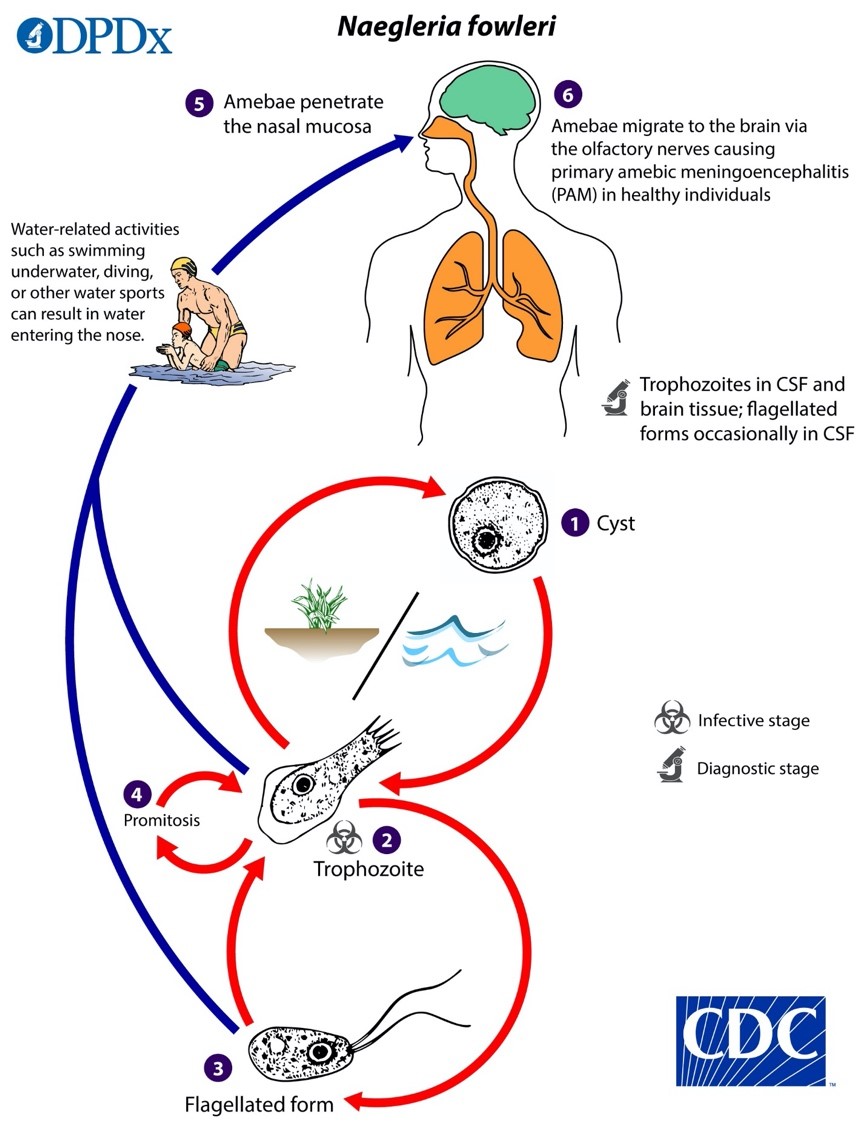Lake Mead is a picturesque destination for many tourists due to its beautiful blue water, rocky formations, and proximity to the Hoover Dam and Las Vegas. Thus, it was an unexpected tragedy when a boy passed away after swimming in the waters of the Lake Mead Recreational Area. The cause of death was found to be the rare, flesh-eating amoeba Naegleria fowleri.
N. fowleri is an amoeba that is known to live in warm, fresh waters such as lakes, hot springs, and rivers. Infections occur most commonly in the warmer months of July, August, and September as the amoeba especially thrives in high temperatures, even up to 115°F. Because the amoeba feeds on organisms that exist in the sediment, it can also exist in lake or river sediment in lower temperatures as well.
N. fowleri becomes deadly when it causes an infection called primary amoebic meningoencephalitis (PAM) in which the amoeba enters the body through the nose, crosses into the skull through the cribiform plate, and replicates inside the brain and meninges. Symptoms include headache, fever, nausea, vomiting, seizures, and coma. Intracranial pressure can be markedly elevated, sometime up to 600 mm H2O. Symptoms may take anywhere from 1 to 12 days to appear, with the average time to onset at five days. This type of amoebic meningoencephalitis is known to progress much more rapidly than bacterial or viral infections and is often fatal within five days with mortality rates over 97%. Treatment for this disease is evolving due to the rare and rapid nature of the disease progression. The current treatment paradigm includes amphotericin B, with some case reporting using azithromycin, fluconazole, rifampin, miltefosine and miconazole. These treatment options are still developing with hopefully more research to follow in the future.
In the United States, there are anywhere from zero to five cases annually, with only 31 total reported infections from 2012 to 2021. Most of these infections were contracted from exposure to recreational waters, however two cases have been reported where the patients were rinsing their sinuses with contaminated tap water. Sinus rinsing is sometimes used as a therapy for clearing congested sinuses and as a traditional practice. Because of this, the CDC now advises that nasal rinsing should be performed with boiled, sterile, or filtered water to reduce the risk of N. fowleri infections.
Rest assured, this infection does not spread through ingestion of drinking water. However, other risk factors for infection include being male and being 14 years of age or younger. This may be due to its association with certain recreational activities (ie swimming, water skiing, boating), especially in southern states such as Florida and Texas. The amoeba has been isolated in recreational geothermal hot springs in California, the Tetons, and throughout the Southwestern United States. Because of this, the National Park Service has been working to create signage and advisories around these hot springs- especially to avoid submerging your mouth and sinuses.

National Park Service signs warning visitors about the risk of N. fowleri.

Infection cycle of Naegleria fowleri from CDC.gov.